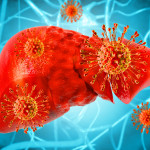Despite the effectiveness of antiretroviral (ARV) therapy, people living with HIV face a higher risk of death than their age-matched HIV-negative peers. However, many risk factors that contribute to an increased risk of death are modifiable—they can often be amended with behavioral changes and proper medical care. During a presentation at the 16th Conference on Retroviruses and Opportunistic Infections (CROI) in Montreal, Colette Smith, MD, of the University College of London Medical School, showed just how many modifiable risk factors there are. She reported intriguing data from the international D:A:D study.
Non-modifiable risk factors associated with death—characteristics that cannot be changed—include gender and age. Modifiable risk factors associated with HIV include CD4 cell counts and viral load, both of which can be remedied using ARV therapy. Non-HIV modifiable risk factors include smoking, a low body-mass index (low body weight in relation to height), diabetes, hepatitis B virus (HBV) infection, hepatitis C virus (HCV) infection and high blood pressure.
The analysis involved a total of 2,192 deaths reported among 33,347 patients participating in one of 11 cohorts involved in the international D:A:D study. Seventy-four percent of the participants who died were men; 45 percent were white (10 percent were black, and 45 percent were “other”); 43 percent were men who have sex with men; and 18 percent were intravenous drug users. Additionally, 34 percent were current cigaratte smokers and 17 percent were ex-smokers.
About 32 percent of the deaths were AIDS related. Another 14 percent were tied to underlying liver disease; 12 percent to non-AIDS-related cancers, such as skin, lung and head and neck malignancies; 11 percent to cardiovascular disease; and 31 percent to conditions listed as “other” (9 percent of fatalities were “non-natural,” such as suicide, murder and accidents).
Overall, smoking (current vs. never) increased the risk of death by approximately 20 percent. Diabetes increased the risk by 83 percent, HCV by 45 percent and HBV by 29 percent. As for HIV-related modifiable risk factors, having a viral load above 400 copies while on treatment increased the risk of death by 56 percent. Being off HIV treatment, but with a viral loads below 10,000 copies/mL, was associated with a 77 percent increase in the risk of death. Being off treatment with a viral load above 100,000 copies more than tripled the risk of death. And for every 50 CD4 cell drop, the risk of death increased by about 20 percent.
Death due to AIDS was associated with body mass index below 18 (compared with individuals with BMIs between 18 and 26), which quadrupled the risk. Dying of AIDS was also associated with diabetes (a 50 percent increase), a low CD4 count, a detectable viral load (ranging from 84 percent increased risk while on treatment to a quadrupled risk if off treatment) and older age.
Liver-related deaths were tied to high blood pressure , essentially tripling the risk. Diabetes more than doubled the risk, HCV quadrupled the risk, and HBV doubled the risk. A low CD4 count, a detectable viral load while on treatment (ranging from a 34 percent increase to a more than doubled risk) and older age also contributed to increased rates of liver-related deaths.
Deaths caused by underlying cardiovascular disease were more common among smokers (a 57 percent increase) and those with high blood pressure and diabetes, each of which more than doubled the risk.
Non-AIDS-related cancer deaths were more likely among smokers (a 61 percent increase), low BMI (a quadrupled risk) and a low CD4 count. Interestingly, there appeared to be a trend toward an even higher risk of non-AIDS-related cancers among former smokers compared with current smokers, although Smith did not report on a statistical comparison between these two specific groups of people and did suggest that some individuals may not have quit early enough to avoid particular health issues.
These findings, Smith said, “reiterate the importance of addressing traditional, non-HIV specific risk factors in order to further reduce death rates in HIV-positive populations.” And while there appears to be an association between CD4 counts, viral loads and non-AIDS deaths, Smith bleakly pointed out “there is currently little evidence that modifying these markers will reduce the risk of non-AIDS mortality.” It is important to note, however, that other studies are suggest lower rates of non-AIDS-related health problems among patients starting ARV therapy earlier than is currently recommended and likely followed in the D:A:D study.
Advertisement
Advertisement
Advertisement





Comments
Comments